 glaucoides & kumlieni
glaucoides & kumlieni
(last update: October 12, 2011)
Iceland & Kumlien's Gull adult March - April
On this page, we continue the article: Identification and Variation of Winter Adult Kumlien’s Gulls, by Steve N.G. Howell & Bruce Mactavish, IN: Alula 1/2003.
The first part of the article can be found HERE.
"we" in the text below refers to the original authors. If any errors occur in this text, please let me know and mail to marsmuusseatgmaildotcom.
Separation from Similar Species and Hybrids
 The only serious field identification difficulties with adult Kumlien’s Gull are its separation from Iceland Gull and Thayer’s Gull. However, the possibility of hybrid combinations of other species should always be considered, particularly for vagrant individuals (e.g. some claims of Kumlien’s Gull from California pertain to hybrid Glaucous-winged x Herring gulls; Howell, pers. obs.). In such cases, concentrate on size and structural characters - Kumlien’s is a relatively "cute" and small-billed large gull, unlike many hybrids of larger and bigger-billed species.
The only serious field identification difficulties with adult Kumlien’s Gull are its separation from Iceland Gull and Thayer’s Gull. However, the possibility of hybrid combinations of other species should always be considered, particularly for vagrant individuals (e.g. some claims of Kumlien’s Gull from California pertain to hybrid Glaucous-winged x Herring gulls; Howell, pers. obs.). In such cases, concentrate on size and structural characters - Kumlien’s is a relatively "cute" and small-billed large gull, unlike many hybrids of larger and bigger-billed species.
Glaucous Gull x Herring Gull hybrids
 These two species hybridise in northwestern North America (Spear 1987), Iceland (lngolfsson 1970, 1987, but cf. Snell 1991b), and eastern Canada (Mactavish pers. obs.). Although the range of plumage variation for this hybrid combination remains to be determined, some presumed hybrid Glaucous x Herring hybrids resemble Kumlien’s Gull in wingtip pattern, wingtip tone and upperpart tone (pers. obs,). Despite potential plumage similarities these hybrids differ from Kumlien`s in their larger size, orbital ring colour (from orange-yellow to reddish orange) and their longer and heavier bills - which should be obvious, especially with other species for comparison.
These two species hybridise in northwestern North America (Spear 1987), Iceland (lngolfsson 1970, 1987, but cf. Snell 1991b), and eastern Canada (Mactavish pers. obs.). Although the range of plumage variation for this hybrid combination remains to be determined, some presumed hybrid Glaucous x Herring hybrids resemble Kumlien’s Gull in wingtip pattern, wingtip tone and upperpart tone (pers. obs,). Despite potential plumage similarities these hybrids differ from Kumlien`s in their larger size, orbital ring colour (from orange-yellow to reddish orange) and their longer and heavier bills - which should be obvious, especially with other species for comparison.
Glaucous Gull x Glaucous-winged Gull hybrids

 These two species hybridise in northwestern North America (Swarth 1934, Strang 1977). The field characters of this hybrid combination are poorly known, but adults show wingtip patterns variably intermediate between the parent taxa (Strang 1977). Thus, some birds might resemble Kurnlien’s Gull in wingtip pattern (and upperpart tone). Given the parent species, however, this hybrid combination should differ noticeably from Kumlien’s Gull in its larger size and longer and heavier bill; this is certainly true of a few presumed Glaucous x Glaucous-winged hybrids seen wintering in California (Howell, pers. obs,).
These two species hybridise in northwestern North America (Swarth 1934, Strang 1977). The field characters of this hybrid combination are poorly known, but adults show wingtip patterns variably intermediate between the parent taxa (Strang 1977). Thus, some birds might resemble Kurnlien’s Gull in wingtip pattern (and upperpart tone). Given the parent species, however, this hybrid combination should differ noticeably from Kumlien’s Gull in its larger size and longer and heavier bill; this is certainly true of a few presumed Glaucous x Glaucous-winged hybrids seen wintering in California (Howell, pers. obs,).
Glaucous-winged Gull x American Herring Gull hybrids
 These two taxa hybridise extensively in northwestern North America and the resultant offspring can apparently show any combination of parental characters (Patten 1980; Howell, pers. obs.). The plumage of this hybrid combination can quite closely resemble that of Kumlien’s Gulls with extensively dark-marked primaries. But the extent of dark in the wingtips is typically more extensive than shown by Kumlien’s Gull, and these hybrids should be slightly darker grey above than Kumlien’s Gull. In addition, hybrids differ from Kumlien’s in their larger size and bigger and heavier bills (but some appear very similar to Thayer’s). Most adults of this hybrid combination are identifiable in the field, given observer experience and the presence of other gulls for comparison. Their larger and longer bills, larger overall size and bulkier structure should preclude confusion with the smaller and shorter-billed Kumlien`s Gull, but some duplicate Thayer’s so closely that they can be passed off as that taxon (Howell and Corben 2000, Howell and Elliott 2001).
These two taxa hybridise extensively in northwestern North America and the resultant offspring can apparently show any combination of parental characters (Patten 1980; Howell, pers. obs.). The plumage of this hybrid combination can quite closely resemble that of Kumlien’s Gulls with extensively dark-marked primaries. But the extent of dark in the wingtips is typically more extensive than shown by Kumlien’s Gull, and these hybrids should be slightly darker grey above than Kumlien’s Gull. In addition, hybrids differ from Kumlien’s in their larger size and bigger and heavier bills (but some appear very similar to Thayer’s). Most adults of this hybrid combination are identifiable in the field, given observer experience and the presence of other gulls for comparison. Their larger and longer bills, larger overall size and bulkier structure should preclude confusion with the smaller and shorter-billed Kumlien`s Gull, but some duplicate Thayer’s so closely that they can be passed off as that taxon (Howell and Corben 2000, Howell and Elliott 2001).
Glaucous-winged Gull x Western Gull hybrids
 These two taxa and their hybrids all interbreed extensively in western North America and the resultant offspring can show almost any combination of parental characters (Bell 1996, 1997; Howell, pers. obs.). While the wingtip pattern of this intergrade combination can resemble Thayer’s Gull closely (e.g. Howell and Elliott 2001), the extent of dark in the wingtips is typically more extensive than shown by Kumlien’s Gull. These hybrids are also darker grey above than Kumlien’s Gull, as well as being larger and bulkier with notably stouter bills (with a more swollen gonys). Other features to separate this hybrid combination from Kumlien’s Gull include orbital ring colour (often including some yellowish; a Western Gull trait), and bill colour (often flesh-coloured basally with a dark subtetminal band, a Glaucous-winged
trait).
These two taxa and their hybrids all interbreed extensively in western North America and the resultant offspring can show almost any combination of parental characters (Bell 1996, 1997; Howell, pers. obs.). While the wingtip pattern of this intergrade combination can resemble Thayer’s Gull closely (e.g. Howell and Elliott 2001), the extent of dark in the wingtips is typically more extensive than shown by Kumlien’s Gull. These hybrids are also darker grey above than Kumlien’s Gull, as well as being larger and bulkier with notably stouter bills (with a more swollen gonys). Other features to separate this hybrid combination from Kumlien’s Gull include orbital ring colour (often including some yellowish; a Western Gull trait), and bill colour (often flesh-coloured basally with a dark subtetminal band, a Glaucous-winged
trait).
Iceland Gull
 Until an attempt is made to quantify variation in adult Iceland Gulls (of presumed pure stock) we can say little about the separation of Kumlien’s and Iceland Gulls. Weir et al. (1995) concluded that winter specimens of Iceland and Kumlien’s types of known sex but unknown origin could not be separated by measurements, and they relied on the wingtip pattern to distinguish between the two taxa. The conventional wisdom is that adult Iceland Gulls have pure white wingtips that lack any of the darker grey marks shown by Kumlien’s Gull (Dwight
1925, Grant l986). In addition, adult lcelands have pale eyes while the eye colour in Kumlien’s Gull is variable (Grant 1986; Table 3). Another character to note is the grey tone of the upperparts which, based on five summer specimens of Iceland Gulls from Greenland, is often noticeably paler (mainly Kodak 3-3.5) and less bluish than Kumlien’s (Howell pers. obs.). Will Russell (pers. comm.) also noted the consistently white wingtips and pale upperparts of Iceland Gulls in Greenland during August 1998: of 300 adult Iceland Gulls, 297 were similar in upperpart tone to adjacent Glaucous Gulls with 3 birds slightly darker (cf. here). Orbital ring colour is another feature to check, although this likely varies seasonally (Macpherson 1961).
Until an attempt is made to quantify variation in adult Iceland Gulls (of presumed pure stock) we can say little about the separation of Kumlien’s and Iceland Gulls. Weir et al. (1995) concluded that winter specimens of Iceland and Kumlien’s types of known sex but unknown origin could not be separated by measurements, and they relied on the wingtip pattern to distinguish between the two taxa. The conventional wisdom is that adult Iceland Gulls have pure white wingtips that lack any of the darker grey marks shown by Kumlien’s Gull (Dwight
1925, Grant l986). In addition, adult lcelands have pale eyes while the eye colour in Kumlien’s Gull is variable (Grant 1986; Table 3). Another character to note is the grey tone of the upperparts which, based on five summer specimens of Iceland Gulls from Greenland, is often noticeably paler (mainly Kodak 3-3.5) and less bluish than Kumlien’s (Howell pers. obs.). Will Russell (pers. comm.) also noted the consistently white wingtips and pale upperparts of Iceland Gulls in Greenland during August 1998: of 300 adult Iceland Gulls, 297 were similar in upperpart tone to adjacent Glaucous Gulls with 3 birds slightly darker (cf. here). Orbital ring colour is another feature to check, although this likely varies seasonally (Macpherson 1961).
Because of the potential for winter range overlap of Iceland and Kumlien’s (e.g. Weir et al. 1995), studying known breeding birds in Greenland seems the only sure way to quantify any variation that may occur in "pure" Iceland Gulls - but note the occasional recent breeding in Greenland of apparent Kumlien’s Gulls (Boertmann 2001).
Thayer’s Gull
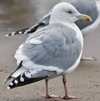 As noted by Howell and Elliott (2001), the problem here can be summed up by the question: "At what point do Thayer’s become reliably separable from Kumlien’s?" And if Thayer’s and
As noted by Howell and Elliott (2001), the problem here can be summed up by the question: "At what point do Thayer’s become reliably separable from Kumlien’s?" And if Thayer’s and
Kumlien’s interbreed freely (as has been reported; see Snell l989) then it follows that some birds should be intermediate in terms of structure, plumage colour, and wingtip pattern. Based on experience of many Thayer’s in California and Kumlien’s in Newfoundland, Howell has seen few problematic birds - and those of uncertain identity may have been hybrids. In addition to details discussed by Howell and Elliott (2001), which we do not repeat here, we offer the following comments that relate to our field experience with large numbers of both taxa.
 As viewed under field conditions, typical Thayer’s averages larger, longer winged and longer billed than Kumlien’s. The steeper forehead and more rounded nape of Kumlien’s often create a gentler countenance suggestive of Mew Gull (L. canus brachyrhynchus), whereas adult Thayer’s tend to have a lower, more sloping forehead and more squared nape suggesting Herring Gull. Note, though, how environmental conditions may affect these perceptions. In cold Newfoundland conditions birds may puff-out head feathers that might be sleeked down in California, and this could accentuate the small-bil1ed appearance of Kumlien’s. In Kumlien’s the wingtip projection beyond the tail is often relatively shorter than on Thayer’s, with P10 usually slightly shorter than or equal to P9 (but projecting slightly on some birds, perhaps mainly females). On Thayer’s the wingtip is longer with P10 often noticeably longer than P9 (but slightly shorter on some birds, more often so on males than females). Such differences may reflect different migration distances between species and sexes. Bill length (as noted by Howell and Elliott 2001) and to some extent bill shape can be helpful: Kumlien’s Gull bills average both shorter and blunter than those of Thayer’s (small bills perhaps reflecting Kumlien’s more northerly and colder wintering grounds) and often lack the sloping hook-tipped effect typically shown by Thayer’s. The culmen decurvature of Kumlien’s typically starts distal to the gonydeal angle, whereas the more gradual decurvature of Thayer’s culmen typically starts above the gonydeal angle and closer to the nostril than on Kumlien’s. There is overlap in bill shape but the shorter and blunter-tipped bill typical of many Kumlien’s Gulls (e.g. Photos 2, 5, 7, 15) is distinct from the longer, more hook-tipped bill of many Thayer’s Gulls (Photos 4, 24). And the larger (presumed male) Kumlien’s with more hook-tipped bills often have shorter-looking wings than Thayer’s Gulls.
As viewed under field conditions, typical Thayer’s averages larger, longer winged and longer billed than Kumlien’s. The steeper forehead and more rounded nape of Kumlien’s often create a gentler countenance suggestive of Mew Gull (L. canus brachyrhynchus), whereas adult Thayer’s tend to have a lower, more sloping forehead and more squared nape suggesting Herring Gull. Note, though, how environmental conditions may affect these perceptions. In cold Newfoundland conditions birds may puff-out head feathers that might be sleeked down in California, and this could accentuate the small-bil1ed appearance of Kumlien’s. In Kumlien’s the wingtip projection beyond the tail is often relatively shorter than on Thayer’s, with P10 usually slightly shorter than or equal to P9 (but projecting slightly on some birds, perhaps mainly females). On Thayer’s the wingtip is longer with P10 often noticeably longer than P9 (but slightly shorter on some birds, more often so on males than females). Such differences may reflect different migration distances between species and sexes. Bill length (as noted by Howell and Elliott 2001) and to some extent bill shape can be helpful: Kumlien’s Gull bills average both shorter and blunter than those of Thayer’s (small bills perhaps reflecting Kumlien’s more northerly and colder wintering grounds) and often lack the sloping hook-tipped effect typically shown by Thayer’s. The culmen decurvature of Kumlien’s typically starts distal to the gonydeal angle, whereas the more gradual decurvature of Thayer’s culmen typically starts above the gonydeal angle and closer to the nostril than on Kumlien’s. There is overlap in bill shape but the shorter and blunter-tipped bill typical of many Kumlien’s Gulls (e.g. Photos 2, 5, 7, 15) is distinct from the longer, more hook-tipped bill of many Thayer’s Gulls (Photos 4, 24). And the larger (presumed male) Kumlien’s with more hook-tipped bills often have shorter-looking wings than Thayer’s Gulls.
Besides structure, Kumlien’s Gulls average paler eyed than Thayer’s, but there is almost complete overlap in this feature (Table 4). Howell also noted subtle aveeage differences in bill and orbital-ring colours between Kumlien’s and Thayer’s at the same season, and using the same optics, but there was enough overlap so that differences are unlikely to be useful for a single bird. In February 2002, the bills of many Kumlien’s Gulls were relatively yellow overall (e.g. Photos 2-3, 9, 13, 25; but cf. Photo 5) lacking the distinctly paler greenish or fleshy base typical of Thayer’s at this time (Photos 4, 24). In addition, the typical orbital ring colour of winter Thayer’s in central California is raspberry-pink. Some Kumlien’s Gulls showed a more reddish or orange-red orbital ring than this, but others had pink orbital rings like Thayer’s (Photo 23). Macpherson (1961) discussed potential seasonal differences in orbital ring colour of both taxa, being redder in breeding birds, paler and more pinkish in post-breeding birds. The bare-part colour differences noted by Howell may simply reflect a more advanced hormonal state in some Kumlien’s Gulls with respect to theseason.
In terms of plumage, Kumlien’s Gulls are slightly paler above than an American Herring Gull while Thayer’s Gulls are slightly darker; such differences can be discerned under good lighting conditions and this may be one of the best identification clues, with the exception of possible hybrids. Wingtip patterns of Thayer’s Gull were detailed by Howell and Elliott (2001) and we have discussed variation in Kumlien’s Gull wingtip pattern above. Kumlien’s typically have obviously paler grey and less extensive wingtip markings than Thayer’s - thus, separating most birds is not a problem. But a few Kumlien’s types we saw in Newfoundland (5% of N = 185) appeared as dark-winged as Thayer’s. Some of these may have been hybrids (as discussed above), and an additional problem in judging wingtip darkness is the effect of viewing Kumlien’s Gulls against snow and ice, which often make wingtips look darker than they are. This effect is often compounded by photographs (e.g. Photo 25) which may be responsible for a perception among birders that Kumlien’s often look as dark as Thayer’s, when in life most are distinctly paler winged.
We have little to add to the discussion of wingtip pattern differences between Thayer’s and "dark-winged Kumlien’s" proposed by Howell and Elliott (2001). We note, though, that problem birds may never be identified satisfactorily (see Photos 20-21). Birders wishing for black-and-white answers to every gull identification should recognise, and accept, the grey zone of uncertainty inherent in this goup of birds.
Taxonomy
Howell and Elliott (2001) recently discussed the taxonomy of Thayer’s, Kumlien’s and Iceland Gulls. They concluded that Thayer’s Gull and Iceland Gull should be considered separate species, but were unsure of the status of Kumlien’s Gull, which is usually treated as a subspecies of Iceland Gull (e.g. Godfrey 1986, AGU 1998). Patten and Unitt (2002) noted that many named subspecies are invalid and recommended critical application of the subspecies concept, such that at least 75% of a population should lie outside 99% of the range of other populations for a given defining character or set of characters (as proposed by Amadon 1949). Simply using wingtip pigmentation (Table 1), 94% of Kumlien’s Gulls in our sample (N = 185) are distinguishable from all Iceland Gulls (Figure 1); when eye colour is added as a character, the separation is about 98%. This supports the distinctness of Kumlien’s and Iceland, at least pending evaluation of variation in the latter.
Kumlien’s Gulls (and Iceland Gulls) in the field look quite different from Thayer’s Gulls in overall structure (head shape, bill size and shape etc. see above) and wingtip pattern, and these two taxa are best treated as separate species. Their specific distinctness might also be supported by differences in winter ecology, with Kumlien’s (and Iceland) being more pelagic, Thayer’s more coastal (Weir et al. l995; pers. obs,). And when variation in wingtip patterns and other characters is examined, the percentage of potential Thayer’s x Iceland/Kumlien’s hybrids in California and Kumlien’s x Thayer’s hybrids in Newfoundland is small (Howell and Elliott 2001, this study). For example, such birds are much less numerous than hybrids among other North American gull taxa: in central California up to 50% of the wintering Western Gulls and Glaucous-winged Gulls at a site can show hybrid characters, while up to 12% of migrant Glaucous-winged Gulls and Herring Gulls can show hybrid characters (Howell, unpubl. data).
Whether Kumlien’s Gull deserves full species rank or is treated as a subspecies of Iceland Gull is a question that remains to be answered satisfactorily. In this regard we reiterate a question raised by Howell and Elliott (2001): are there two types of so-called "Kumlien’s Gulls"? First, there is the taxon breeding mainly on Baffin Island and which we presumably studied in winter in Newfoundland - the conventional Kumlien’s Gull. Second, could there be interbreeding between Iceland Gulls and Thayer’s Gulls to the north of the range of Kumlien’s Gull - which produces hybrids that resemble Kumlien’s? Such birds could explain pale-winged “Thayer’s Gulls” on Ellesmere Island, some 1400 km north of the known breeding range of Kumlien’s (Godfrey 1986, Pittaway 1999). Pale-winged specimens attributed to Thayer’s (Bulls (e.g. figure 63 of Godfrey 1986) were identified as Thayer’s by virtue of measurements and grey tone of the upperparts (R. Pittaway, in litt.). That such birds could be Thayer’s x Iceland hybrids also seems a possibility, but where do these birds winter, and how common are they? Note that if wingtip details in figure 63 of Godfrey (1986) are shown accurately, the pale-winged “Thayer’s” do not look like Kumlien’s Gulls in Newfoundland. If they inherit the migration traits of Thayer’s, such birds could account for some California sightings of pale first-year birds that resemble neither typical Thayer’s Gulls nor Newfoundland Kumlien’s Gulls (Howell, pers. obs.; Photos 26-27). Summer conditions (e.g. the extent of ice cover) in the High Arctic vary greatly from year to year and R. Pittaway (in litt.) suggests that birds in some colonies do not breed every year or could move to other colonies to breed - which might cause interbreeding between taxa. Of interest is that the two accepted California records of Iceland Gull (sensu AOU 1998) are white-winged birds that look like nominate Iceland rather than Kumlien’s (Erickson and Hamilton 2001). Could they and hybrid Thayer’s x Iceland gulls be reaching the North American Pacific coast from the Canadian High Arctic or northwest Greenland?
Answers to these questions and conjectures await careful studies on the breeding grounds. In this regard, the east coast of Baffin Island, where Thayer’s and Kumlien’s may be sympatric and hybridise, seems an obvious area to investigate. Although breeding populations in eastern
Baffin Island were allegedly studied by Smith (1966), that study was questioned by Sutton (1968) and shown by Snell (1989, 1991a) to have been fabricated to an unknown degree. But, as noted by Garner and Mactavish (2001), Snell (1989) oversimplified his separation of thayeri and kumlieni types nesting on Baffin Island, so critical studies of nesting birds are still needed. Pending such studies, we hope the provisional identification criteria presented here and by Howell and Elliott (2001) provoke thoughts about this subject.
Summary
We quantify and summarise variation in adult presumed Kumlien’s Gulls wintering in Newfoundland. Although Kumlien’s Gulls are quite variable in wingtip pattern, about 90-95% are of a broad type that is obviously distinct from both Thayer’s Gull and Iceland Gull. Fully white-winged and pale-eyed birds (possibly Iceland Gulls) comprise only 1-2% of the wintering population, while the darkest-winged birds (including possible hybrids with Thayer’s Gull) comprise about 5%. We believe that Thayer’s Gull is a species distinct from Kumlien’s and Iceland Gulls, but what is Kumlien’s Gull? Is it a race of Iceland Gull, or even a distinct species? And are there two types of “Kumlien’s Gull”? We acknowledge the provisional nature of our conclusions and encourage critical study of other populations, preferably on the breeding grounds.
Acknowledgements
We thank Jonathan K. Alderfer and James Dean for information on, and access to, the type specimen of Kumlien’s Gull held at the National Museum of Natural History (Smithsonian Institution), Washington, D.C.; Ron Pittaway for information on specimens identified by W. E. Godfrey (housed at the Canadian Museum of Nature); Martin T. Elliott for kindly contributing the plate of wingtip patterns; and Grant Ballard and Tom Gardali for help preparing Figure 1. The manuscript benefited from comments by Jon L. Dunn, Martin T. Elliott, Ted Hoogendoorn, Jean Iron, Ron Pittaway, Peter Pyle and Will Russell.
References
Amadon, D. 1949: The seventy-five percent rule for subspecies. Condor 51: 250-258.
American Ornithologists’ Union (AOU). 1998. Check-list of North American Birds, 7th edition. AOU, Washingron, D.C.
Bell, D. A. 1996: Generic differentiation, geographic variation, and hybridization in gulls of the Larus glaucescens-occidentalis complex. Condor 98: 527-546.
Bell, D. A. 1997: Hybridization and reproductive performance in gulls of the Larus glaucescens-occidentalis complex. Condor 99: 585-594.
Boertmann, D. 2001: The Iceland Gull complex in Greenland. Brit Birds 94: 546-548.
Brewster, W. 1883: On an apparently new gull from eastern North America. Bulletin Nuttall Ornithological Club 8: 214-219.
Dwight, J. 1925: The gulls (Laridae) of the world: their plumages, moults, variations, relationships, and distribution. Bull. Amer. Mus. Nat. Hist. 52: 63-402.
Erickson, R. A. and R. A. Hamilton 2001: Report of the California Bird Records Committee: 1998 records. Western Birds 32:13-49.
Garner, M. and Mactavish, B. 2001: The in-between gull. Birdwatch 103 (January issue): 26-31.
Godfrey, W. E. 1986: The Birds of Canada, revised edition. National Museums of Canada, Ottawa.
Grant, P. J. 1986: Gulls: A Guide to Identification, 2nd edition. Academic Press. San Diego.
Howell, S. N. G. 1998: Shades of grey: the Catch 22 of Thayer’s Gull. Birders Journal 7: 305-309.
Howell, S. N. G. 2001: A new look at moult in gulls. Alula 7: 2-11.
Howell, S. N. G. and Corben, C. 2000: Identification of Thayer’s-like gulls. The Herring x Glaucous-winged Gull problem. Birders Journal 9: 25-33.
Howell, S. N. G. and Elliott, M. T. 2001: Identification and variation of winter adult Thayer’s Gulls, with comments on taxonomy. Alula 7: 130-144.
Ingolfsson, A. 1987: Hybridization of Glaucous and Herring gulls in Iceland. Studies in Avian Biology 10:131-140.
Ingolfsson, A. 1970: Hybridization of Glaucous Gulls Larus hyperboreus and Herring Gulls L. argentatus in Iceland. Ibis 112: 83-92.
Macpherson, A. H. 1961: Observations on Canadian arctic Larus gulls and on the taxonomy of L. thayeri. Brooks. Arctic Institute of North America technical papers 7: 1-40.
Patten, M. A. and Unitt, P. 2002: Diagnosibility versus mean differences of Sage Sparrow subspecies. Auk 119: 26-35.
Patten, S. M. 1980: Interbreeding and evolution in the Larus glausescens – Larus argentatus complex on the south coast of Alaska. Unpubl. PhD thesis. John Hopkins University.
Pittaway, R. 1999: Taxonomic history of Thayer’s Gull. Ontario Birds 17: 2-13.
Salomonson, F. 1951: The Birds of Greenland, vol. 2. Munksgaard, Copenhagen, Denmark.
Smith, N. G. 1966: Evolution of arctic gulls (Larus): an experimental study of isolating mechanisms. Ornithol. Monographs No. 4, AOU, Washington, DC.
Snell, R. R. 1989: Status of Larus gulls at Home Bay, Baffin Island. Colonial Waterbirds 12: 12-23.
Snell, R. R. 1991a: Conflation of the observed and the hypothesized: Smith’s 1961 research in Home Bay, Baffin Island. Colonial Waterbirds 14: 196-202.
Snell, R. R. 1991b: Variably plumaged Icelandic Herring Gulls reflect founders not hybrids. Auk 108: 329-341.
Spear, I. B. 1987: Hybridization of Glaucous and Herring gulls at the Mackenzie Delta, Canada. Auk 104: 123-125.
Strang, C. A. 1977: Variation and distribution of Glaucous Gulls in western Alaska. Condor 79: 170-175.
Sutton, G. M. 1968: Review of: Smith, N. G. 1966. Evolution of some arctic gulls (Larus): an experimental study of isolating mechanisms. Auk 85: 142-145.
Swarth, H. B. 1934: Birds of Nunivak Island. Pacific Coast Avifauna No. 22.
Weir, D. N., Kitchener, A. C. and McGowan, R. Y. 2000: Hybridization and changes in the distribution of Iceland Gulls (Larus glaucoides / kumlieni / thayeri). J. Zool London 252: 517-530.
Weir, D. N., McGowan, R. Y., Kitchener, A. C., McOrist, S., Zonfrillo, B. and Heubeck, M. 1995: Iceland Gulls from the "Braer" disaster, Shetland 1993. Brit. Birds 88: 15-25.
Zimmer, K. 1991: Plumage variation in ”Kumlien’s” Iceland Gull. Birding 23: 254-269.
 Iceland Gull (kumlieni) A4 adult, January 2013 - March 2015, Quidi Vidi Lake, St. John's, Newfoundland. Picture: Lisa de Leon, Peter Adriaens & Alvan Buckley.
Iceland Gull (kumlieni) A4 adult, January 2013 - March 2015, Quidi Vidi Lake, St. John's, Newfoundland. Picture: Lisa de Leon, Peter Adriaens & Alvan Buckley. Iceland Gull (glaucoides) adults, 28 February - 04 March 2010, near Reykjavik, SW Iceland. Pictures: Hans Larsson. Resting flock.
Iceland Gull (glaucoides) adults, 28 February - 04 March 2010, near Reykjavik, SW Iceland. Pictures: Hans Larsson. Resting flock. Stage 0, unmarked white wingtip.
Stage 0, unmarked white wingtip. Iceland Gull (glaucoides) adult, 28 February - 04 March 2010, near Reykjavik, SW Iceland. Pictures: Hans Larsson. Primary: Stage 0. Iris: class 1 (0%>1% speckling).
Iceland Gull (glaucoides) adult, 28 February - 04 March 2010, near Reykjavik, SW Iceland. Pictures: Hans Larsson. Primary: Stage 0. Iris: class 1 (0%>1% speckling). Iceland Gull (glaucoides) adult, 28 February - 04 March 2010, near Reykjavik, SW Iceland. Pictures: Hans Larsson. Primary: Stage 0. Iris: class 1 (0%>1% speckling).
Iceland Gull (glaucoides) adult, 28 February - 04 March 2010, near Reykjavik, SW Iceland. Pictures: Hans Larsson. Primary: Stage 0. Iris: class 1 (0%>1% speckling).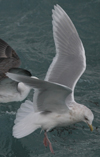 Iceland Gull (glaucoides) adult, 28 February - 04 March 2010, near Reykjavik, SW Iceland. Pictures: Hans Larsson. Primary: Stage 0. Iris: class 1 (0%>1% speckling).
Iceland Gull (glaucoides) adult, 28 February - 04 March 2010, near Reykjavik, SW Iceland. Pictures: Hans Larsson. Primary: Stage 0. Iris: class 1 (0%>1% speckling). Iceland Gull (glaucoides) adult, 28 February - 04 March 2010, near Reykjavik, SW Iceland. Pictures: Hans Larsson. Primary: Stage 0. Iris: class 1 (0%>1% speckling).
Iceland Gull (glaucoides) adult, 28 February - 04 March 2010, near Reykjavik, SW Iceland. Pictures: Hans Larsson. Primary: Stage 0. Iris: class 1 (0%>1% speckling). Iceland Gull (glaucoides) adult, 28 February - 04 March 2010, near Reykjavik, SW Iceland. Pictures: Hans Larsson. Primary: Stage 0. Iris: class 1 (0%>1% speckling).
Iceland Gull (glaucoides) adult, 28 February - 04 March 2010, near Reykjavik, SW Iceland. Pictures: Hans Larsson. Primary: Stage 0. Iris: class 1 (0%>1% speckling).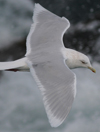 Iceland Gull (glaucoides) adult, 28 February - 04 March 2010, near Reykjavik, SW Iceland. Pictures: Hans Larsson. Primary: Stage 0. Iris: class 1 (0%>1% speckling).
Iceland Gull (glaucoides) adult, 28 February - 04 March 2010, near Reykjavik, SW Iceland. Pictures: Hans Larsson. Primary: Stage 0. Iris: class 1 (0%>1% speckling).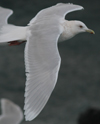 Iceland Gull (glaucoides) adult, 28 February - 04 March 2010, near Reykjavik, SW Iceland. Pictures: Hans Larsson. Primary: Stage 0. Iris: class 1 (0%>1% speckling).
Iceland Gull (glaucoides) adult, 28 February - 04 March 2010, near Reykjavik, SW Iceland. Pictures: Hans Larsson. Primary: Stage 0. Iris: class 1 (0%>1% speckling).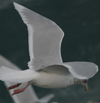 Iceland Gull (glaucoides) adult, 28 February - 04 March 2010, near Reykjavik, SW Iceland. Pictures: Hans Larsson. Primary: Stage 0. Iris: class 1 (0%>1% speckling).
Iceland Gull (glaucoides) adult, 28 February - 04 March 2010, near Reykjavik, SW Iceland. Pictures: Hans Larsson. Primary: Stage 0. Iris: class 1 (0%>1% speckling).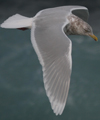 Iceland Gull (glaucoides) adult, 28 February - 04 March 2010, near Reykjavik, SW Iceland. Pictures: Hans Larsson. Primary: Stage 0. Iris: class 1 (0%>1% speckling).
Iceland Gull (glaucoides) adult, 28 February - 04 March 2010, near Reykjavik, SW Iceland. Pictures: Hans Larsson. Primary: Stage 0. Iris: class 1 (0%>1% speckling). Iceland Gull (glaucoides) adult, 28 February - 04 March 2010, near Reykjavik, SW Iceland. Pictures: Hans Larsson. Primary: Stage 0. Iris: class 1 (0%>1% speckling).
Iceland Gull (glaucoides) adult, 28 February - 04 March 2010, near Reykjavik, SW Iceland. Pictures: Hans Larsson. Primary: Stage 0. Iris: class 1 (0%>1% speckling).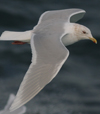 Iceland Gull (glaucoides) adult, 28 February - 04 March 2010, near Reykjavik, SW Iceland. Pictures: Hans Larsson. Primary: Stage 0. Iris: class 1 (0%>1% speckling).
Iceland Gull (glaucoides) adult, 28 February - 04 March 2010, near Reykjavik, SW Iceland. Pictures: Hans Larsson. Primary: Stage 0. Iris: class 1 (0%>1% speckling). Iceland Gull (glaucoides) adult, 28 February - 04 March 2010, near Reykjavik, SW Iceland. Pictures: Hans Larsson. Primary: Stage 0. Iris: class 1 (0%>1% speckling).
Iceland Gull (glaucoides) adult, 28 February - 04 March 2010, near Reykjavik, SW Iceland. Pictures: Hans Larsson. Primary: Stage 0. Iris: class 1 (0%>1% speckling). Iceland Gull (glaucoides) adult, 28 February - 04 March 2010, near Reykjavik, SW Iceland. Pictures: Hans Larsson. Primary: Stage 0. Iris: class 1 (0%>1% speckling).
Iceland Gull (glaucoides) adult, 28 February - 04 March 2010, near Reykjavik, SW Iceland. Pictures: Hans Larsson. Primary: Stage 0. Iris: class 1 (0%>1% speckling).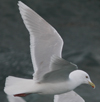 Iceland Gull (glaucoides) adult, 28 February - 04 March 2010, near Reykjavik, SW Iceland. Pictures: Hans Larsson. Primary: Stage 0. Iris: class 1 (0%>1% speckling).
Iceland Gull (glaucoides) adult, 28 February - 04 March 2010, near Reykjavik, SW Iceland. Pictures: Hans Larsson. Primary: Stage 0. Iris: class 1 (0%>1% speckling).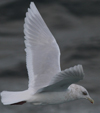 Iceland Gull (glaucoides) adult, 28 February - 04 March 2010, near Reykjavik, SW Iceland. Pictures: Hans Larsson. Primary: Stage 0. Iris: class 1 (0%>1% speckling).
Iceland Gull (glaucoides) adult, 28 February - 04 March 2010, near Reykjavik, SW Iceland. Pictures: Hans Larsson. Primary: Stage 0. Iris: class 1 (0%>1% speckling). Iceland Gull (glaucoides) adult, 28 February - 04 March 2010, near Reykjavik, SW Iceland. Pictures: Hans Larsson. Primary: Stage 0. Iris: class 1 (0%>1% speckling).
Iceland Gull (glaucoides) adult, 28 February - 04 March 2010, near Reykjavik, SW Iceland. Pictures: Hans Larsson. Primary: Stage 0. Iris: class 1 (0%>1% speckling). Iceland Gull (glaucoides) adult, 28 February - 04 March 2010, near Reykjavik, SW Iceland. Pictures: Hans Larsson. Primary: Stage 0. Iris: class 1 (0%>1% speckling).
Iceland Gull (glaucoides) adult, 28 February - 04 March 2010, near Reykjavik, SW Iceland. Pictures: Hans Larsson. Primary: Stage 0. Iris: class 1 (0%>1% speckling). Iceland Gull (glaucoides) adult, 28 February - 04 March 2010, near Reykjavik, SW Iceland. Pictures: Hans Larsson. Primary: Stage 0. Iris: class 1 (0%>1% speckling).
Iceland Gull (glaucoides) adult, 28 February - 04 March 2010, near Reykjavik, SW Iceland. Pictures: Hans Larsson. Primary: Stage 0. Iris: class 1 (0%>1% speckling). Iceland Gull (glaucoides) adult, 28 February - 04 March 2010, near Reykjavik, SW Iceland. Pictures: Hans Larsson. Primary: Stage 0. Iris: class 1 (0%>1% speckling).
Iceland Gull (glaucoides) adult, 28 February - 04 March 2010, near Reykjavik, SW Iceland. Pictures: Hans Larsson. Primary: Stage 0. Iris: class 1 (0%>1% speckling). Iceland Gull (glaucoides) adult, 28 February - 04 March 2010, near Reykjavik, SW Iceland. Pictures: Hans Larsson. Primary: Stage 0. Iris: class 1 (0%>1% speckling).
Iceland Gull (glaucoides) adult, 28 February - 04 March 2010, near Reykjavik, SW Iceland. Pictures: Hans Larsson. Primary: Stage 0. Iris: class 1 (0%>1% speckling). Iceland Gull (glaucoides) adult, 28 February - 04 March 2010, near Reykjavik, SW Iceland. Pictures: Hans Larsson. Primary: Stage 0. Iris: class 1 (0%>1% speckling).
Iceland Gull (glaucoides) adult, 28 February - 04 March 2010, near Reykjavik, SW Iceland. Pictures: Hans Larsson. Primary: Stage 0. Iris: class 1 (0%>1% speckling). Iceland Gull (glaucoides) adult, 28 February - 04 March 2010, near Reykjavik, SW Iceland. Pictures: Hans Larsson. Primary: Stage 0. Iris: class 2 (1%>5% speckling).
Iceland Gull (glaucoides) adult, 28 February - 04 March 2010, near Reykjavik, SW Iceland. Pictures: Hans Larsson. Primary: Stage 0. Iris: class 2 (1%>5% speckling). Iceland Gull (glaucoides) adult, 28 February - 04 March 2010, near Reykjavik, SW Iceland. Pictures: Hans Larsson. Primary: Stage 0. Iris: class 5 (>50% speckling).
Iceland Gull (glaucoides) adult, 28 February - 04 March 2010, near Reykjavik, SW Iceland. Pictures: Hans Larsson. Primary: Stage 0. Iris: class 5 (>50% speckling).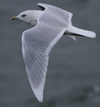 Iceland Gull (glaucoides) adult, 28 February - 04 March 2010, near Reykjavik, SW Iceland. Pictures: Hans Larsson. Primary: Stage 0. Iris: class 6 (clouded iris).
Iceland Gull (glaucoides) adult, 28 February - 04 March 2010, near Reykjavik, SW Iceland. Pictures: Hans Larsson. Primary: Stage 0. Iris: class 6 (clouded iris). Iceland Gull (glaucoides) adult, 28 February - 04 March 2010, near Reykjavik, SW Iceland. Pictures: Hans Larsson. Primary: Stage 0. Iris: class 6 (clouded iris).
Iceland Gull (glaucoides) adult, 28 February - 04 March 2010, near Reykjavik, SW Iceland. Pictures: Hans Larsson. Primary: Stage 0. Iris: class 6 (clouded iris).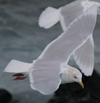 Iceland Gull (glaucoides) adult, 28 February - 04 March 2010, near Reykjavik, SW Iceland. Pictures: Hans Larsson. Primary: Stage 0. Iris: class -.
Iceland Gull (glaucoides) adult, 28 February - 04 March 2010, near Reykjavik, SW Iceland. Pictures: Hans Larsson. Primary: Stage 0. Iris: class -.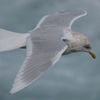 Iceland Gull (glaucoides) adult, 28 February - 04 March 2010, near Reykjavik, SW Iceland. Pictures: Hans Larsson. Primary: Stage 0. Iris: class -.
Iceland Gull (glaucoides) adult, 28 February - 04 March 2010, near Reykjavik, SW Iceland. Pictures: Hans Larsson. Primary: Stage 0. Iris: class -. Stage 1, darker grey marks on the outer one to four primaries but no subterminal marks.
Stage 1, darker grey marks on the outer one to four primaries but no subterminal marks. Iceland Gull (glaucoides) adult, 28 February - 04 March 2010, near Reykjavik, SW Iceland. Pictures: Hans Larsson. Primary: Stage 1. Iris: class 1 (0%>1% speckling).
Iceland Gull (glaucoides) adult, 28 February - 04 March 2010, near Reykjavik, SW Iceland. Pictures: Hans Larsson. Primary: Stage 1. Iris: class 1 (0%>1% speckling). Iceland Gull (glaucoides) adult, 28 February - 04 March 2010, near Reykjavik, SW Iceland. Pictures: Hans Larsson. Primary: Stage 1. Iris: class 1 (0%>1% speckling).
Iceland Gull (glaucoides) adult, 28 February - 04 March 2010, near Reykjavik, SW Iceland. Pictures: Hans Larsson. Primary: Stage 1. Iris: class 1 (0%>1% speckling). Stage 2, darker grey marks on the outer three to four primaries with subterminal marks on one to three primaries.
Stage 2, darker grey marks on the outer three to four primaries with subterminal marks on one to three primaries. 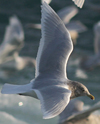 Kumlien's Gull (kumlieni) adult, 28 February - 04 March 2010, near Reykjavik, SW Iceland. Pictures: Hans Larsson. Primary: Stage 2. Iris: class 1 (0%>1% speckling).
Kumlien's Gull (kumlieni) adult, 28 February - 04 March 2010, near Reykjavik, SW Iceland. Pictures: Hans Larsson. Primary: Stage 2. Iris: class 1 (0%>1% speckling).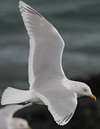 Kumlien's Gull (kumlieni) adult, 28 February - 04 March 2010, near Reykjavik, SW Iceland. Pictures: Hans Larsson. Primary: Stage 2. Iris: class 1 (0%>1% speckling).
Kumlien's Gull (kumlieni) adult, 28 February - 04 March 2010, near Reykjavik, SW Iceland. Pictures: Hans Larsson. Primary: Stage 2. Iris: class 1 (0%>1% speckling). Kumlien's Gull (kumlieni) adult, 28 February - 04 March 2010, near Reykjavik, SW Iceland. Pictures: Hans Larsson. Primary: Stage 2. Iris: class 2 (1%>5% speckling).
Kumlien's Gull (kumlieni) adult, 28 February - 04 March 2010, near Reykjavik, SW Iceland. Pictures: Hans Larsson. Primary: Stage 2. Iris: class 2 (1%>5% speckling). Kumlien's Gull (kumlieni) adult, 28 February - 04 March 2010, near Reykjavik, SW Iceland. Pictures: Hans Larsson. Primary: Stage 2. Iris: class 6 (clouded iris).
Kumlien's Gull (kumlieni) adult, 28 February - 04 March 2010, near Reykjavik, SW Iceland. Pictures: Hans Larsson. Primary: Stage 2. Iris: class 6 (clouded iris). Stage 3, darker grey marks on the outer three to four primaries with subterminal marks on one to three primaries.
Stage 3, darker grey marks on the outer three to four primaries with subterminal marks on one to three primaries. 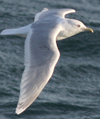 Kumlien's Gull (kumlieni) adult, 28 February - 04 March 2010, near Reykjavik, SW Iceland. Pictures: Hans Larsson. Primary: Stage 3. Iris: class 1 (0%>1% speckling).
Kumlien's Gull (kumlieni) adult, 28 February - 04 March 2010, near Reykjavik, SW Iceland. Pictures: Hans Larsson. Primary: Stage 3. Iris: class 1 (0%>1% speckling). Kumlien's Gull (kumlieni) adult, 28 February - 04 March 2010, near Reykjavik, SW Iceland. Pictures: Hans Larsson. Primary: Stage 3. Iris: class 1 (0%>1% speckling).
Kumlien's Gull (kumlieni) adult, 28 February - 04 March 2010, near Reykjavik, SW Iceland. Pictures: Hans Larsson. Primary: Stage 3. Iris: class 1 (0%>1% speckling).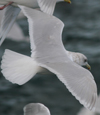 Kumlien's Gull (kumlieni) adult, 28 February - 04 March 2010, near Reykjavik, SW Iceland. Pictures: Hans Larsson. Primary: Stage 3. Iris: class -.
Kumlien's Gull (kumlieni) adult, 28 February - 04 March 2010, near Reykjavik, SW Iceland. Pictures: Hans Larsson. Primary: Stage 3. Iris: class -.